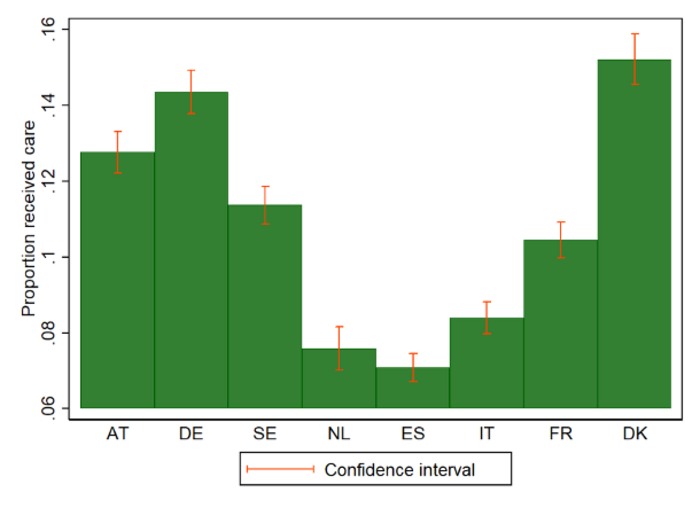

As the Corona crisis progresses many questions arise on what a new “normality” can look like. In all the scenarios discussed, society must find ways to protect vulnerable groups for whom a Covid-19 infection has proven to be especially fatal - elderly people and people with pre-existing conditions. Physical distancing of these individuals will be of vital importance in the months to come. One can find differences across Europe in the task ahead to secure the health of elderly groups.
In a first attempt to understand the heterogeneity of cases of fatality due to a Covid-19 infection between European countries Bayer and Kuhn (2020) provide an interesting insight: Based on data of the world value survey they show that in some Southern countries, like Italy, vulnerable groups cohabit with their younger and more socially active children more often. Infection chains therefore reach the elder population more easily. Their conclusion is that these countries will have a more difficult task securing the health of the elderly.
This analysis, however, omits an important dimension: Older individuals often need to rely on long-term care. Based on the SHARE dataset[1], Figure 1 depicts the proportion of individuals in the population 60+ per country that receive care from outside their own household. The relation across Europe is reverse to the household size: countries with a smaller average household size show a higher proportion of care received from other households. Especially in Denmark and Germany, where households are significantly smaller than in Spain or Italy high proportions need help from individuals outside the household. It is important to notice that in most cases care is necessary - so these social interactions are unavoidable by nature.
Long-term care is provided either informally by family members and friends or in a mix of informal care and formal care. Formal care can be provided by day care facilities or professionals coming to the homes of care dependent individuals to execute important health related tasks. At some point many elderly decide to move to an old age care facility. Many of the professional care arrangements are more difficult to organize due to the corona crisis or even break away (e.g. old age facilities take no new residents; day care facilities are shut down). Families therefore must organize more care informally.
Organizing health for frail elderly entails protecting them from a Covid-19 infection. Consequently, some families might react by reducing the group of caregivers per care dependent individual to reduce the danger of an infection. This, however, will result in an increased care workload and reduced labor for some caregivers. As the economic crisis progresses and unemployment increases, informal LTC provision might shift toward those friends and relatives that are now out of work. Costa-Font, Martin and Øien (2016) indeed find that in the Great Recession in Europe the availability of informal care provided from outside the care dependent individual’s household increased significantly. This mechanism could provide a short-term solution for some care arrangements but certainly not for the majority. Moreover, most likely the economic situation will improve before the risk of a Covid-19 infection for care dependent individuals has been considerably reduced. Therefore, policy needs to support informal care.
Policy can provide help in several ways: protective clothing for formal and informal caregivers and for the individuals receiving care needs to be available. Also, fast track testing for informal caregivers can reduce risks and insecurity. Further, the social security system can provide benefits to support families and to allow to concentrate informal care provision to fewer family members. This can entail opportunities to reduce labor to help take care of elderly parents while being able to return to the job later. The ‘Pflegezeitgesetz’ and ‘Familienpflegezeitgesetz’ in Germany contain examples of measures of this kind; they may, however, not be sufficient in the current situation and should be extended.
[1] Survey of Health, Ageing and Retirement in Europe (SHARE) provides interesting information on living conditions and the situation of the elderly population across European countries, see Börsch-Supan, Axel, et al. "Data resource profile: the Survey of Health, Ageing and Retirement in Europe (SHARE)." International journal of epidemiology 42.4 (2013): 992-1001. (https://academic.oup.com/ije/article/42/4/992/657275)
[insert image 1]
Copyright Fischer
Figure 1: Proportion of individuals receiving care from outside their household by country
Björn Fischer (DIW Berlin)
Bayer, Christian, and Moritz Kuhn. 2020. Intergenerational ties and case fatality rates: A cross-country analysis.
Costa‐Font, Joan, Martin Karlsson, and Henning Øien. 2016. Careful in the Crisis? Determinants of Older People's Informal Care Receipt in Crisis‐Struck European Countries. Health economics 25 (2016): 25-42.